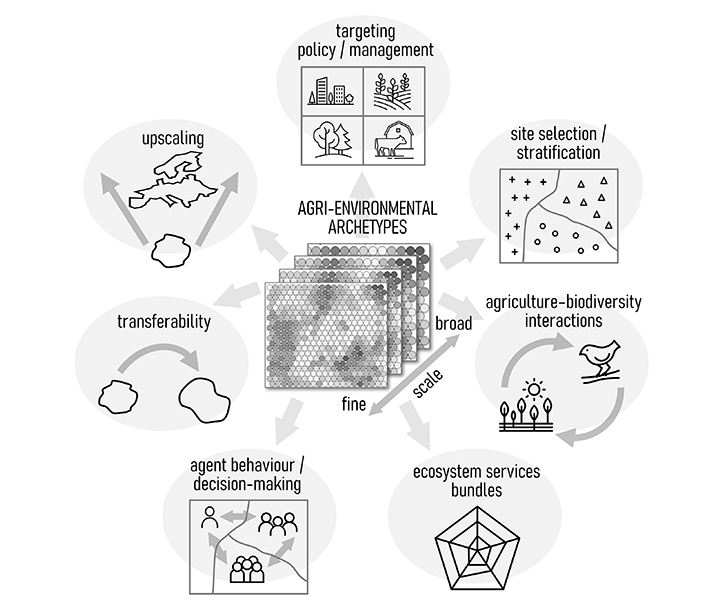Behavioural, Ecological and Socio-economic
Tools for Modelling Agricultural Policy
New BESTMAP paper presents a multi-scale typology for spatial stratification and upscaling in Europe
A newly-published paper, providing a spatial classification approach for identifying archetypal patterns of agri-environmental potential in Europe based on machine-learning clustering is now available in the Environmental Research Letters journal. Titled "Archetypes of agri-environmental potential: a multi-scale typology for spatial stratification and upscaling in Europe," the study is fully supported and conducted by the BESTMAP team of experts, amongst whom are the project coordinator Guy Ziv (University of Leeds) and members Michael Beckmann (Helmholtz Centre for Environmental Research - UFZ), James Bullock (UK Centre for Ecology & Hydrology), Anna Cord (Dresden University of Technology), Anne Paulus (Helmholtz Centre for Environmental Research - UFZ) and Tomáš Václavík (Palacký University Olomouc).

Conceptual framework showing the scalable approach for identifying archetypes of agri-environmental potential and their application domains.
A synthesised, spatially explicit understanding of agricultural systems and their environmental circumstances is necessary to develop spatially targeted strategies for farmland in the European Union (EU). In order to generalise European landscapes and their agricultural potential into spatial units that are instructive at any given resolution and extent, such synthesis must be adaptable and scalable. Typologies of agricultural areas have significantly improved recently, but agriculturally important features still haven't been added.
Hereof, the paper provides a spatial classification approach for identifying archetypal patterns of agri-environmental potential in Europe based on machine-learning clustering of 17 variables on bioclimatic conditions, soil characteristics and topographical parameters.
Read the full article here.